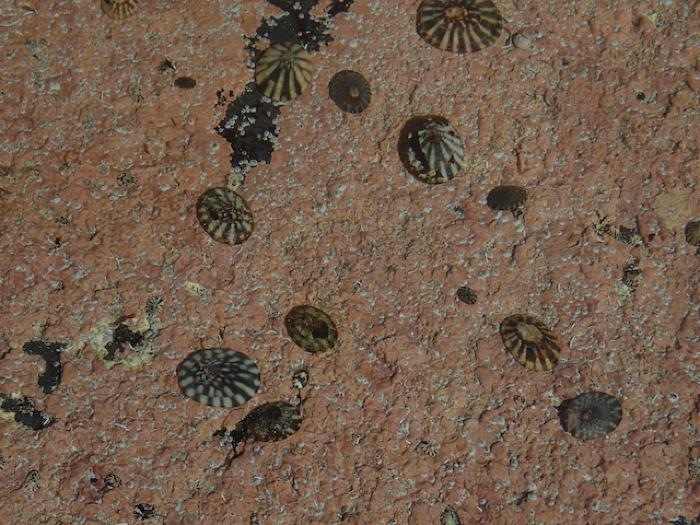Limpet — Sawak’iitaq, Spuungqulaq

Limpets (Lottia spp.) are among the intertidal organisms that encrust the rocky shores of Kodiak. The archipelago is home to a variety of these small invertebrates: the keyhole limpet, the tortoiseshell limpet, and others. Limpets are grazing animals that form distinctive cone-shaped shells. They feed on algae by moving slowly across rocks on a single foot. They are particularly active at night and when covered by ocean water. At low tide, limpets clamp tightly to rocks to protect themselves from birds and sea stars.
Ancient shell middens illustrate that limpets were once a common part of seafood dinners on Kodiak. They were probably collected most intensively in the spring, during the lowest tides of the year. Spring is also the time when winter stores were exhausted and people depended on shellfish while they waited for other resources to become available. Alutiiq people continue to harvest limpets today, adding them to stews and chowders or simply eating them raw. Children sometimes collect them for a quick snack.
Kodiak Islanders sometimes refer to limpets as “China caps” because the shape of the animal’s shell is similar to the hats once worn by Chinese laborers. This comparison is probably passed down from the late nineteenth century when salmon processors hired Chinese work gangs to run canning equipment in communities like Karluk.
